
Helen Beatrix Potter was an English writer, illustrator, natural scientist, and conservationist. She is best known for her children's books featuring animals, such as The Tale of Peter Rabbit, which was her first commercially published work in 1902. Her books, including 23 Tales, have sold more than 250 million copies. An entrepreneur, Potter was a pioneer of character merchandising. In 1903, Peter Rabbit was the first fictional character to be made into a patented stuffed toy, making him the oldest licensed character.

A nursery rhyme is a traditional poem or song for children in Britain and many other countries, but usage of the term dates only from the late 18th/early 19th century. The term Mother Goose rhymes is interchangeable with nursery rhymes.
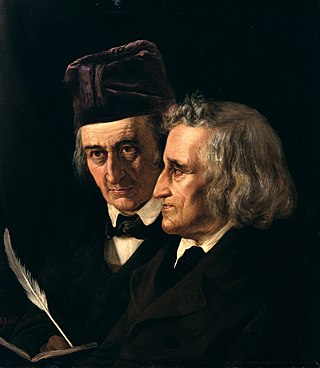
The Brothers Grimm, Jacob (1785–1863) and Wilhelm (1786–1859), were German academics who together collected and published folklore. The brothers are among the best-known storytellers of folktales, popularizing stories such as "Cinderella", "The Frog Prince", "Hansel and Gretel", "Town Musicians of Bremen", "Little Red Riding Hood", "Rapunzel", "Rumpelstiltskin", "Sleeping Beauty", and "Snow White". Their first collection of folktales, Children's and Household Tales, began publication in 1812.

Children's literature or juvenile literature includes stories, books, magazines, and poems that are created for children. Modern children's literature is classified in two different ways: genre or the intended age of the reader, from picture books for the very young to young adult fiction.

Enoch Arnold Bennett was an English author, best known as a novelist who wrote prolifically. Between the 1890s and the 1930s he completed 34 novels, seven volumes of short stories, 13 plays, and a daily journal totalling more than a million words. He wrote articles and stories for more than 100 newspapers and periodicals, worked in and briefly ran the Ministry of Information in the First World War, and wrote for the cinema in the 1920s. Sales of his books were substantial and he was the most financially successful British author of his day.
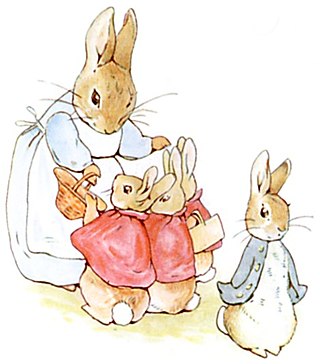
A picture book combines visual and verbal narratives in a book format, most often aimed at young children. With the narrative told primarily through text, they are distinct from comics, which do so primarily through sequential images.

Dame Margaret Drabble, Lady Holroyd, is an English biographer, novelist and short story writer.

The English novel is an important part of English literature. This article mainly concerns novels, written in English, by novelists who were born or have spent a significant part of their lives in England, Scotland, Wales, or Northern Ireland. However, given the nature of the subject, this guideline has been applied with common sense, and reference is made to novels in other languages or novelists who are not primarily British, where appropriate.

John Lydgate of Bury was an English monk and poet, born in Lidgate, near Haverhill, Suffolk, England.
British literature is literature from the United Kingdom of Great Britain and Northern Ireland, the Isle of Man, and the Channel Islands. This article covers British literature in the English language. Anglo-Saxon literature is included, and there is some discussion of Latin and Anglo-Norman literature, where literature in these languages relate to the early development of the English language and literature. There is also some brief discussion of major figures who wrote in Scots, but the main discussion is in the various Scottish literature articles.
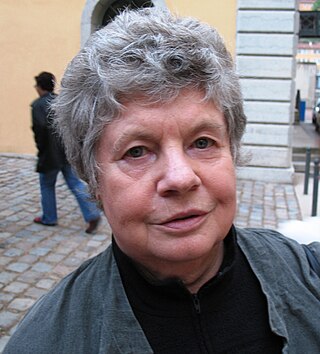
Dame Antonia Susan Duffy, known professionally by her former married name, A. S. Byatt, was an English critic, novelist, poet and short story writer. Her books have been translated into more than thirty languages.
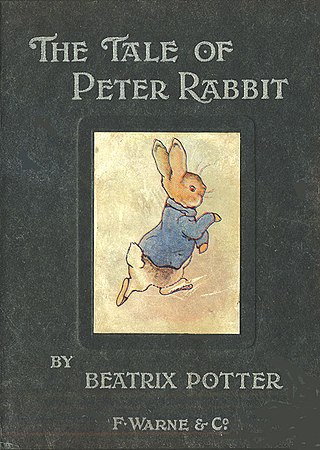
The Tale of Peter Rabbit is a children's book written and illustrated by Beatrix Potter that follows mischievous and disobedient young Peter Rabbit as he gets into, and is chased around, the garden of Mr. McGregor. He escapes and returns home to his mother, who puts him to bed after offering him chamomile tea. The tale was written for five-year-old Noel Moore, the son of Potter's former governess, Annie Carter Moore, in 1893. It was revised and privately printed by Potter in 1901 after several publishers' rejections, but was printed in a trade edition by Frederick Warne & Co. in 1902. The book was a success, and multiple reprints were issued in the years immediately following its debut. It has been translated into 36 languages, and with 45 million copies sold it is one of the best-selling books in history.
Young adult literature (YA) is literature, most often including novels, written for readers from 12 to 18 years of age. The term YA was first used regularly in the 1960s in the United States. The YA category includes most of the genres found in adult fiction, with themes that include friendship, drugs and alcohol, and sexual and gender identity. Stories that focus on the challenges of youth may be categorized as problem novels or coming-of-age novels.

The Clayhanger Family is a series of novels by Arnold Bennett, published between 1910 and 1918. Though the series is commonly referred to as a "trilogy", and the first three novels were published in a single volume, as The Clayhanger Family, in 1925, there are actually four books. All four are set in the "Five Towns", Bennett's thinly disguised version of the six towns of the Staffordshire Potteries.

The Oxford Companion to English Literature first published in 1932, edited by the retired diplomat Sir Paul Harvey (1869–1948), was the earliest of the Oxford Companions to appear. It is currently in its seventh edition (2009), edited by Dinah Birch. The work, which has been periodically updated, includes biographies of prominent historical and leading contemporary writers in the English language, entries on major works, "allusions which may be encountered", significant (serial) publications and literary clubs. Writers in other languages are included when they have affected the anglophone world. The Companion achieved "classic status" with the expanded fifth edition edited by novelist and scholar Margaret Drabble, and the book was often referred to as "The Drabble".

English literature is literature written in the English language from the English-speaking world. The English language has developed over the course of more than 1,400 years. The earliest forms of English, a set of Anglo-Frisian dialects brought to Great Britain by Anglo-Saxon invaders in the fifth century, are called Old English. Beowulf is the most famous work in Old English, and has achieved national epic status in England, despite being set in Scandinavia. However, following the Norman conquest of England in 1066, the written form of the Anglo-Saxon language became less common. Under the influence of the new aristocracy, French became the standard language of courts, parliament, and polite society. The English spoken after the Normans came is known as Middle English. This form of English lasted until the 1470s, when the Chancery Standard, a London-based form of English, became widespread. Geoffrey Chaucer (1343–1400), author of The Canterbury Tales, was a significant figure in the development of the legitimacy of vernacular Middle English at a time when the dominant literary languages in England were still French and Latin. The invention of the printing press by Johannes Gutenberg in 1439 also helped to standardise the language, as did the King James Bible (1611), and the Great Vowel Shift.
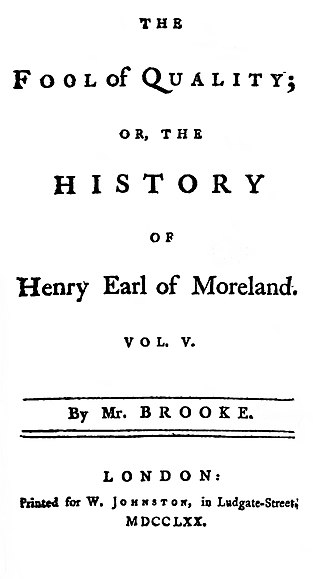
The Fool of Quality; or, The History of Henry, Earl of Moreland (1765–70), a picaresque and sentimental novel by the Irish writer Henry Brooke, is the only one of his works which has enjoyed any great reputation. The somewhat shapeless plot is an account of the doings of young Harry Clinton, who, rejected by his decadent and aristocratic father, is educated on enlightened principles by his philanthropic uncle. Thus equipped to fight the evils of the world the innocent yet wise hero does his best to better the lot of the unfortunate Hammel Clement and his family, and other deserving cases, in the intervals between the author’s frequent philosophical digressions and commentaries on the action.
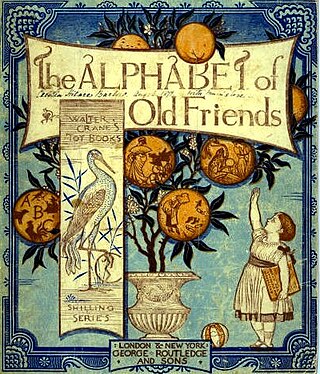
Toy books were illustrated children's books that became popular in England's Victorian era. The earliest toy books were typically paperbound, with six illustrated pages and sold for sixpence; larger and more elaborate editions became popular later in the century. In the mid-19th century picture books began to be made for children, with illustrations dominating the text rather than supplementing the text.
Frederick Joseph Harvey Darton was an author, publisher, and historian of children's literature. He was best known for his pioneering works in The Story of English Children's Books in England: Five Centuries of Social Life (1932). The Children's Books History Society presented an award in his honour.
This article is focused on English-language literature rather than the literature of England, so that it includes writers from Scotland, Wales, and the whole of Ireland, as well as literature in English from former British colonies. It also includes, to some extent, the United States, though the main article for that is American literature.















